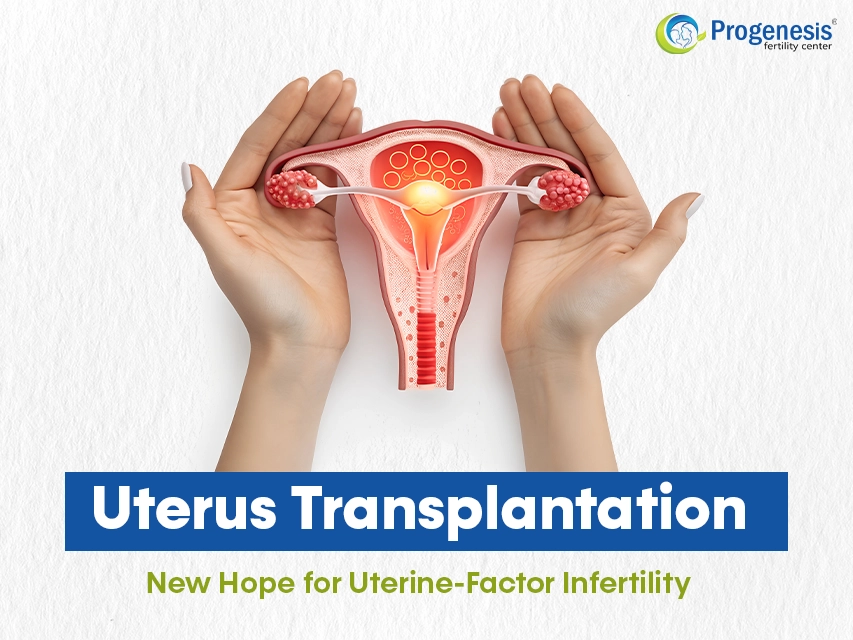What is uterus transplantation?
Uterus transplantation is an intricate approach that allows women with uterine factor infertility to bear a child. It takes a highly skilled team and strict coordination, with transplant surgeons, fertility specialists, and support staff all involved. The major goal is to help people who were born without a uterus or who lost one due to medical reasons conceive.
Uterine-factor infertility explained
Uterine factor infertility is a situation in which a person is unable to conceive because their uterus either does not exist or is no longer working properly. This can be congenital (born with) or acquired. Though not commonly used at the time, a uterus transplant can help women with uterine factor infertility become pregnant, carry, and deliver a baby.
Also Read: LAH Treatment for Fertility - Laser Assisted Hatching
Who is eligible for transplant?
Not everyone is a candidate for a uterine transplant. Those who were born without a uterus or who had one removed due to illness or surgery may consider this option. Doctors examine medical records to identify health conces such as autoimmune disease or cancer, which may restrict surgery. Age also matters and most programs target women between the ages of 20 and 40, when the chances of pregnancy are higher. Mental resilience is also crucial because the path is long and difficult, commonly occurring after years of infertility and loss.
Transplant procedure overview
The uterus transplant procedure for pregnancy requires the following steps:
- The initial match between a donor and a recipient. The donor could be alive or dead. The doctors test for both health and tissue compatibility.
- The donor's uterus is gently extracted. Surgeons must extract both uterine arteries and at least one main vein from each side. These will help provide blood flow when the uterus is implanted.
- The uterus is implanted in the recipient's pelvis. Surgeons connect the arteries and veins of the uterus to major blood vessels in the pelvis, typically the exteal iliac vessels. This procedure, known as anastomosis, calls for a steady hand.
- The vagina is then linked to the new uterus, forming a natural birth canal.
- The recipient begins taking immunosuppressants to help the body accept the new organ. Other medications, including sirolimus and mycophenolate mofetil, should be discontinued 6 weeks before trying conception since they are not pregnancy-safe.
- IVF embryos are put into the transplanted uterus. If a pregnancy develops, the team closely watches both the mother and the baby.
Also Read: What are the Causes of Failed IVF Cycle?
Risks and ethical considerations
The following risks are associated with an uterus transplant:
- It takes several months to heal.
- Hospitalisations might last for weeks.
- Recipients experience pain.
- There are risks of infection.
- Patients require strong immunosuppressant medications.
- Most people deal with stress and fear of rejection.
Frequent scans and blood tests conducted by your doctors can prevent medical risks, and counselors can help you get emotional support. you need.
The ethical considerations for this surgery include:
- Risks for living donors vs the use of deceased donors.
- Informed consent of both donors and recipients.
- Long-term consequences of immunosuppression on recipients.
- Equality of access to effective fertility treatments
Also Read: 7 simple tips to keep your uterus healthy
Early success stories
Sweden (2014): The world's first live birth following uterine transplantation happened in Sweden, bringing an end to absolute uterine factor infertility.
India (2017): A young woman received her mother's uterus, resulting in the delivery of a healthy child in October 2018.
United States (2023): Mallory, who was born without a uterus, gave birth to her son in July 2023, making her the first UAB uterine transplant patient to do so.
United Kingdom (2025): A healthy baby was born in the UK following a uterus transplant, with the donor being the recipient's own sister, marking the first UK birth after a womb transplant.
Frequently Asked Questions
1. What is “uterine factor infertility” (UFI)?
2. What is a uterus transplant?
3. Who is a candidate?
4. Has it been done before, and is it safe?
The risks of uterus transplant surgery include bleeding, infection, injury in nerve, blood vessel, intestine, bladder, or ureter injury, uterine transplant rejection, and immunosuppressive pharmaceutical side effects such as diabetes and renal damage after long-term use.
5. What are the key steps in the process?
- Identifying and assessing potential donors.
- Obtaining consent (Donation)
- Matching donors and beneficiaries.
- Coordinating the transplant.
- Recovering organs.
- Organ transplant.


